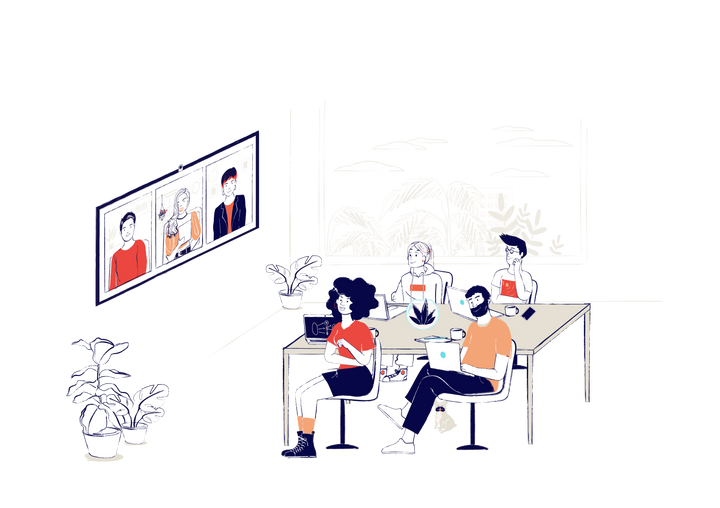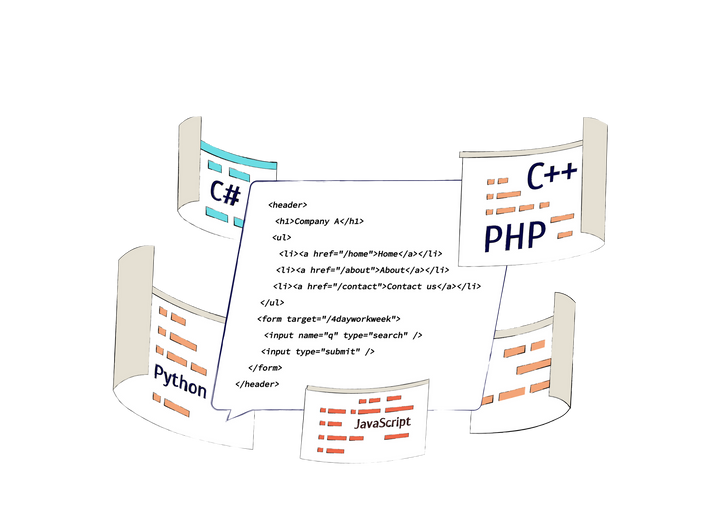How to Build an Inclusive Workplace

Building an inclusive workplace is an important part of being a Conscious Company. Everybody wants to feel safe and supported in the environment where they spend the majority of their time. Prioritizing inclusion can no longer be an afterthought.
But as with all aspects of Conscious Culture, inclusion isn’t a given. Building an inclusive workplace is something that needs to be actively worked on. This guide will give you tips and suggestions for creating an inclusive workplace for all.
What is an inclusive workplace
An inclusive workplace is one where every team member is valued, included, and respected regardless of who they are. Inclusive workplaces often are championed as part of Diversity, Equity, and Inclusion teams or initiatives.
Often people think about inclusion as a fixed state, a list of adaptations to check off. But what inclusion means will differ from person to person, with different companies needing different types of inclusion measures. No matter if your company is a remote first company, a company operating within offices, or a company that provides services or manual labor, every workplace should aim to be as inclusive as possible. It’s the right thing to do for both your employees and your business.
Note: Sometimes employers may consider an employee/person as diverse. A person cannot be diverse; diversity is in reference to a group and can only exist in relationship to others so an individual is not diverse. They can bring diversity to your team or workplace.
What are inclusive practices
Inclusive practices aim to identify and deconstruct any barriers to participation and success in your workplace. Being inclusive also means offering support and workplace adaptations as necessary to empower employees.
Some examples of inclusive practices include:
- Building room into meetings for everybody to share ideas and opinions.
- Creating Diversity, Equity, and Inclusion working groups or forums.
- Showing real commitment to diversity throughout the organization, especially at senior levels.
- Proactively offering adjustments and adaptations to employees in order to help them thrive.
How can you build an inclusive workplace?
Building an inclusive workplace is a top priority for any company concerned with creating a Conscious Culture. You can begin to build an inclusive workplace by:
- Setting the standard for inclusion.
- Creating an inclusive space at work.
- Showing true commitment to diversity.
- Being honest with yourself about your organization.
Setting the standard for inclusion
Being inclusive, as with Conscious Culture, is something that needs to be a purposeful act. Inclusion doesn’t happen by accident, and it doesn’t happen overnight.
Setting a standard for inclusion and sticking to it is important for employees, as they can see that you truly value inclusion and are proactively working on embedding inclusion throughout your company culture. Some ways that you can set the standard for inclusion are:
Creating a mission statement and operating values
An easy first step toward inclusion is to create or update your mission statement and operating values to reflect your commitment to inclusion. Adding a simple line upfront can show that inclusion is important to your existing teammates, and as new team members join the company they will be aware of your commitment to inclusion from the start. At Bolt, the operating value of United and Unique includes the paragraph:
We value the strength that comes when we acknowledge, respect, and embrace our unique histories, skills, and experiences. And, we firmly believe that we win when we are united in our differences.
All new hires read this document, and join the company with the expectation that they will be respected and included and that they are expected to respect and include others too.
Practice inclusive hiring
Making inclusion part of the hiring process is also a good way to set the standard upfront. Ways to prioritize inclusive hiring can be:
- Blind hiring which means removing identifiable information such as candidates name and university attended from the resumes before they reach the hiring manager.
- Proactively reaching out to candidates to ask about adaptations or adjustments you can offer for interviews such as phone or video interviews, information about office access, or a full schedule of the interview.
- Adopting a “Strong Yes” hiring mentality that prioritizes candidate potential over past opportunities the candidate may have had due to their background.
Use zero tolerance policies
If your organization does not already have policies around discrimination it’s really important to draft these ASAP. Including zero tolerance policies toward discrimination and exclusion are useful both from a legal standpoint, but also as a way to reassure employees that you truly value diversity and differences and that you are working to create a safe environment for them to work in.
The purpose of a zero tolerance policy is to explain to all team members, in clear language, that your organization will not tolerate harassment or discrimination. The legalities of these policies, as well as what constitutes discrimination, varies between states, countries, and industries so always seek legal advice before making any policy or contract changes.
Create an inclusive space at work
Once you have set out your intentions to create an inclusive workplace, you have to follow through. Paying lip service to DEI (Diversity, Equity, and Inclusion) without enacting actual policies or change is a sure fire way to ensure your employees no longer trust you. The next step to true inclusion at work is to walk the walk and take action on your initiatives.
Ways that you can show true commitment to creating an inclusive space at work are:
Celebrating diversity
Throughout the year there are hundreds of different cultural festivals, events, observances, awareness months, and important days that could be recognized or celebrated. Encouraging employees to mark the events that are important to them and, if they feel comfortable, share some information around the event or its traditions within the wider company is one easy way to empower your employees to celebrate diversity.
If budget allows you could even encourage the whole team to celebrate. Simple initiatives can make a big difference, such as:
- A meal allowance for employees to support a Hispanic owned business during Hispanic heritage month.
- A guest speaker to share their experiences during International Women’s Day.
- Time off to donate blood on National Donor Day.
- Desk drops of small gifts or candy to celebrate Diwali.
Form a DEI working group
Forming a DEI forum or working group is one powerful way to commit to inclusion at work. Asking members of your team to take charge and power inclusion efforts in the ways that are most important to them is a great way to ensure inclusion has impact.
DEI working groups and forums should be optional, supported by senior leadership, and have tangible outcomes. It is not enough to just create a space to discuss inclusion. Members of the group should feel empowered to express their opinions and feelings, knowing it will result in actual action.
Show true commitment to diversity
Part of being a Conscious Company is being dedicated to learning and growing. No company will be perfect straight away, but the most important thing is that you’re trying.
Showing a true commitment to diversity means showing action and changes within your organizations. Places you can start are with:
Educating your team and leaders
Building an inclusive workplace means making sure that your team members are actively learning and participating in inclusion initiatives. Hosting webinars, workshops, or open hours on various diversity themes is a good way to start thinking about inclusion.
Educating leaders and visible stakeholders, and seeing them lead by example when it comes to diversity and inclusion is the easiest way to ensure company wide buy-in. If possible, ask your senior leaders to attend inclusion and diversity education sessions and encourage them to ask questions during Q&As, and share their own experiences when relevant.
Putting budget behind diversity
Another way to show real commitment to building an inclusive workplace is by assigning a budget to diversity initiatives. Not only do you help those championing diversity initiatives feel supported and appreciated, but you’re more likely to engage other employees too. Some simple examples could be:
- Hosting a lunch and learn about a specific diversity issue and providing a lunch buffet.
- Matching donations for team fundraising for charitable causes.
- Paying practitioners to deliver high quality learning experiences on diversity.
- Desk dropping or mailing small gifts to your workforce to celebrate specific diversity events or holidays.
If you’re unable to spare budget, you can also consider giving employees time back:
- An afternoon off for employees to volunteer.
- An early finish on specific cultural days so that all employees can use the time to celebrate or learn.
- A “no work” day where team members can come in to work and participate in diversity activities not related to their jobs such as learning, fundraising, or volunteering.
Making your meetings accessible
Accessibility is about more than just physical spaces. Inclusion is more than just diversity initiatives. To truly build an inclusive workplace you have to look at how your current practices can be improved. Meetings are an easy place to start. Ask yourself:
- Can all meetings be attended virtually? People may not be able to commute to offices or spend the day away from home due to disabilities or caring responsibilities.
- Do meetings require cameras to be switched on? People living with chronic illnesses often find it easier to work from a comfortable spot such as their bed, requiring cameras on can have an impact on your teammates comfort.
- Are handouts provided? People with neuro-divergences can find it easier to process information or follow along in meetings with paper handouts, as opposed to just listening.
- Are meetings allowing space for multiple viewpoints? Take a look at who hosts and leads the majority of meetings. Are the same people always leading? Is there room for diverse and different viewpoints to be shared?
Committing to transparent career growth
Every department should have a levelling guide or job architecture that provides explicit details on the competencies/skills that are needed to be successful in the role and provides insight on expectations for the next level. Managers are expected to use their levelling guides to drive career development conversations and empower direct reports to create growth plans that are tracked/revisited every quarter. Transparent documentation can help alleviate confusion on promotions and role expectations.
You should also implement a structured process giving and receiving feedback. All employees should have access to quality feedback outside of the performance review process. The process should have a standardized framework to package feedback to employees.
Be honest with yourself
If you ask any company “are you an inclusive organization” they’ll probably say yes. But if you were to dig a little deeper you’d find that the answer was probably “sort of”.
There’s no shame in being wrong. You have to always be a little wrong before you can get it completely right. Inclusion and diversity is one of the areas that will always require active work. To build an inclusive workplace make sure that you are:
Conducting inclusion audits
Holding yourself accountable means fully understanding the scale of your problem, and it can be difficult to be honest and transparent when auditing yourself. Hiring an external company or consultant to explore, report on, and give recommendations for your diversity and inclusion efforts is an invaluable way to show commitment to inclusion, and to make a real change at your organization.
Holding behavior to account
There’s no point creating zero tolerance policies if they are never upheld. Part of being an inclusive workplace means making your teammates feel supported. An inclusive workplace is an environment of trust. Hold non-inclusive and discriminatory behavior to account, and use the opportunity to reinforce your policies and expectations of all employees within the company.
What’s next for inclusive workplaces?
Creating an inclusive workplace is not just a “one and done” job. You should always be growing, learning, and iterating on your workplace culture to ensure that you are always supporting your team.
Building in formal processes to review current policies and culture practices around DEI on a yearly or biannual basis, as well as frequent reviews of suggestions and concerns raised by your DEI working groups is one way to make sure that you’re committing to inclusivity.




